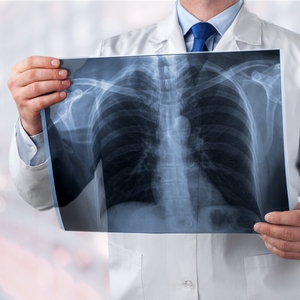Missouri Court of Appeals Rules that the Admission of Expert Testimony on the Specific Cause of an Infant's Injury During Delivery was Prejudicial Error
ABSTRACT: The Missouri Court of Appeals, Eastern District, ruled that a trial court’s decision to admit a biomechanical expert’s opinions on the specific cause of an infant’s injury during delivery was prejudicial error and remanded the case for a new trial.
In Huett v. Branson, the Missouri Court of Appeals for the Eastern District applied the expert witness statute, as amended in 2017, to exclude pivotal causation testimony offered by a defense expert in a medical malpractice case. The Court of Appeals determined the trial court’s decision to admit a biomechanical expert’s opinions on the specific cause of an infant’s injury during delivery was prejudicial error and remanded the case for a new trial.
In Huett, the plaintiff brought a medical malpractice claim for injuries sustained by her infant son during delivery complications caused by shoulder dystocia. The plaintiff alleged the defendant OB/GYN’s mishandling of her labor and delivery caused her son’s shoulder dystocia, causing injury to his brachial plexus and permanent paralysis of his arm. The plaintiff’s medical experts - both physicians - testified that the infant’s injury was caused by an inappropriate amount of lateral traction applied by the defendant OB/GYN to the infant’s head after delivery, while also testifying the permanent injury to the infant’s brachial plexus could not have occurred due to maternal forces like uterine contractions and pushing alone.
The Defendant OB/GYN asserted that maternal forces were the primary cause of her son’s injury and offered the testimony of a biomechanical engineering expert in support of his position. The biomechanical engineer had been collaborating with obstetricians researching the biomechanics of birth and their effects on newborns since the 1990s. While the biomechanical expert had published numerous peer-reviewed articles on the topic and collaborated with obstetricians in analyzing literature on the topic, she was not a physician and had never performed the shoulder dystocia maneuvers she researched and wrote about.
Instead, she developed a computer model to study the mechanics of brachial plexus injury during deliveries impeded by shoulder dystocia and, based on her computer simulations, was permitted at trial to offer general causation testimony - brachial plexus injury during shoulder dystocia due to maternal forces - as well as specific causation testimony that the shoulder dystocia and resulting injury occurred primarily due to maternal forces with a smaller contribution from the normal axial traction applied by the defendant OB/GYN. (“General causation” refers to whether an injury can be caused by a certain process - e.g., whether maternal forces alone can ever cause a brachial plexus injury. “Specific causation” refers to whether a particular plaintiff’s injury was caused by that process – e.g., whether the maternal forces alone caused the infant’s injury).
After a defense verdict, the plaintiff appealed, in part, the trial court’s decision to allow the defendants’ biomechanical expert to offer general and specific causation testimony.
Regarding the plaintiff’s challenge to the biomechanical expert’s general causation testimony, the Court of Appeals ruled the trial court did not err in allowing her to offer general causation opinions because her general causation opinion was limited to the effect of maternal forces on an infant’s body during shoulder dystocia and the ability of those forces to cause injury to the brachial plexus – issues “well within” the biomechanical engineer’s expertise and extensive studying and modeling. Furthermore, the expert’s general causation opinions were reliable because they applied the principles and methods of the software she developed based on her extensive study and modeling of forces involved in shoulder dystocia to the facts of the case.
Conversely, the Court ruled the biomechanical expert’s opinions on specific causation should have been excluded because: (1) she was not qualified to offer the opinion that the infant was susceptible to permanent brachial plexus injury and that the injury was caused primarily by maternal forces with some contribution from the axial traction applied by the defendant OB/GYN, and (2) she did not reliably apply her computer modeling to the specific facts of this case. The Court of Appeals dismissed the proffered specific causation testimony, concluding, “the complete lack of information regarding the key elements of the situation results in an opinion that is substantially the product of assumptions and conjecture.” Concluding that the trial court’s error in permitting the biomechanical expert to give specific causation testimony materially affected the outcome of the case, and was prejudicial, and the Court of Appeals reversed and sent the case back to the trial court for a new trial.
Notably, the Court of Appeals in Huett engaged in a fact-specific assessment of the expert’s proffered general and specific causation testimony and did not hand down a bright line rule regarding the permissible scope of a biomechanical expert’s testimony under §490.065 RSMo. Similarly, the Court did not rule that a biomechanical expert’s testimony must be supported by physician testimony, nor did it rule out the possibility that a biomechanical expert could, with the right qualifications under §490.065 RSMo., address specific causation of medical issues. Coupled with the admission of the expert’s general testimony and exclusion of the specific causation testimony, the ruling seems likely to be cited by proponents and opponents of expert testimony alike in future cases.
* Ruthie Vaughn, Law Clerk, assisted in the research and drafting of this post.
related services
About Missouri Law Blog
Baker Sterchi's Missouri Law Blog examines significant developments, trends and changes in Missouri law on a broad range of topics of interest to Missouri practitioners and attorneys and businesses with disputes subject to Missouri law. Learn more about the editor, David Eisenberg.
Subscribe via email
Subscribe to rss feeds
RSS FeedsABOUT baker sterchi blogs
Baker Sterchi Cowden & Rice LLC (Baker Sterchi) publishes this website as a service to our clients, colleagues and others, for informational purposes only. These materials are not intended to create an attorney-client relationship, and are not a substitute for sound legal advice. You should not base any action or lack of action on any information included in our website, without first seeking appropriate legal or other professional advice. If you contact us through our website or via email, no attorney-client relationship is created, and no confidential information should be transmitted. Communication with Baker Sterchi by e-mail or other transmissions over the Internet may not be secure, and you should not send confidential electronic messages that are not adequately encrypted.
The hiring of an attorney is an important decision, which should not be based solely on information appearing on our website. To the extent our website has provided links to other Internet resources, those links are not under our control, and we are not responsible for their content. We do our best to provide you current, accurate information; however, we cannot guarantee that this information is the most current, correct or complete. In addition, you should not take this information as a promise or indication of future results.
Disclaimer
The Missouri Law Blog is made available by Baker Sterchi Cowden & Rice LLC for educational purposes only as well as to give you general information and a general understanding of the law, not to provide specific legal advice. Your use of this blog site alone creates no attorney client relationship between you and the firm.
Confidential information
Do not include confidential information in comments or other feedback or messages related to the Missouri Law Blog, as these are neither confidential nor secure methods of communicating with attorneys. The Missouri Law Blog should not be used as a substitute for competent legal advice from a licensed professional attorney in your state.














